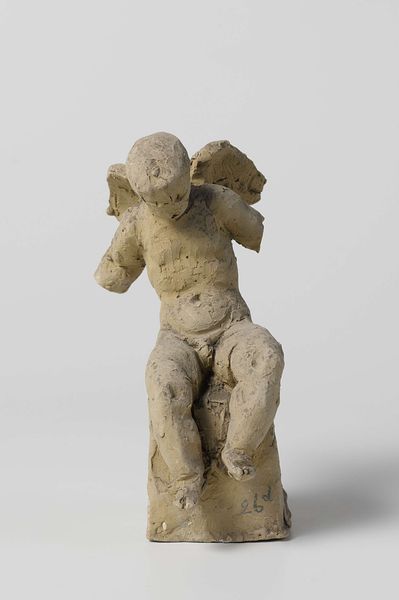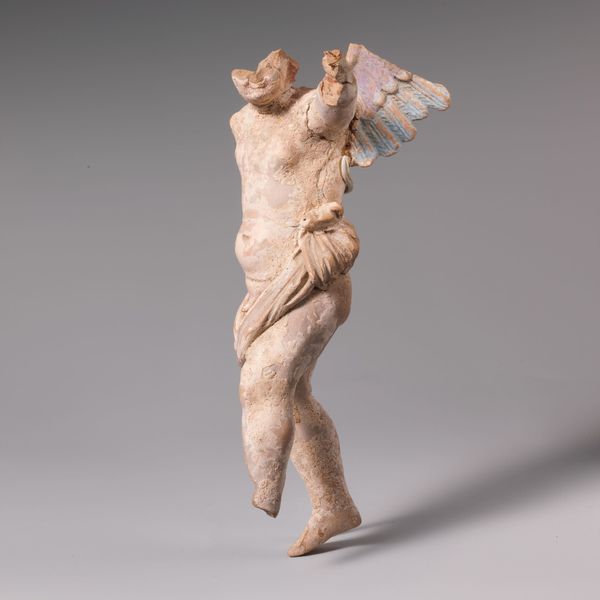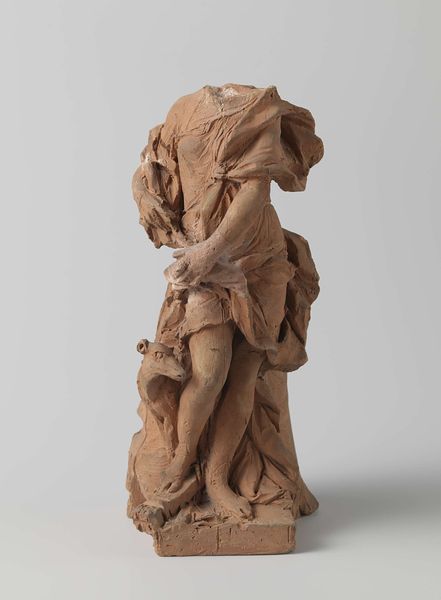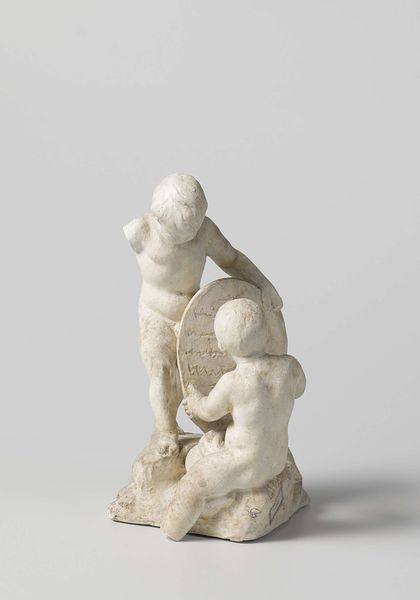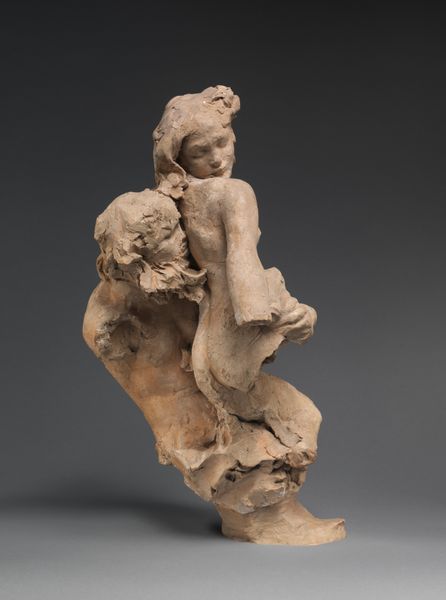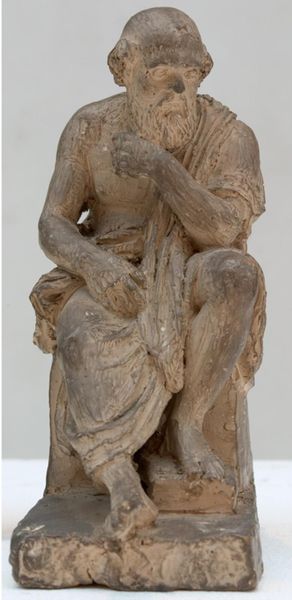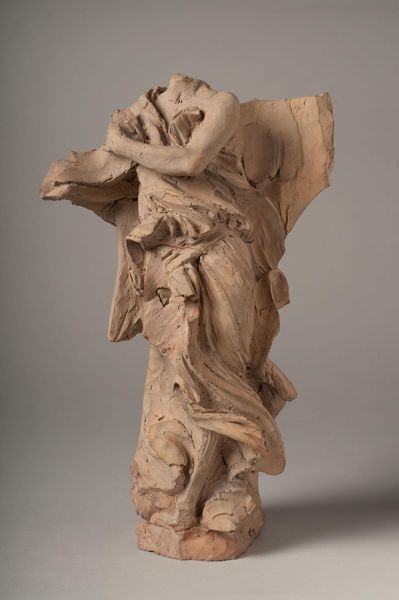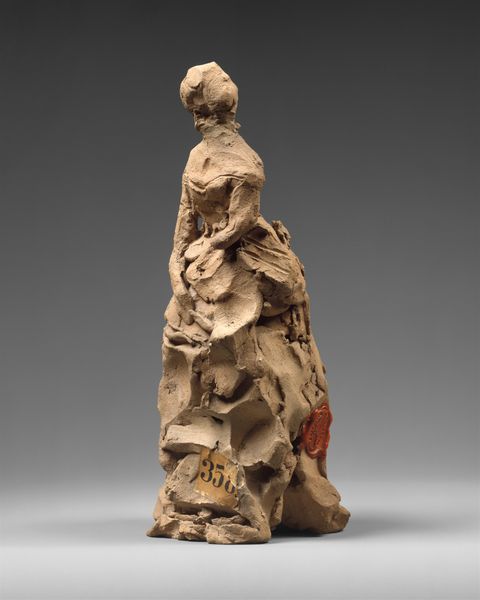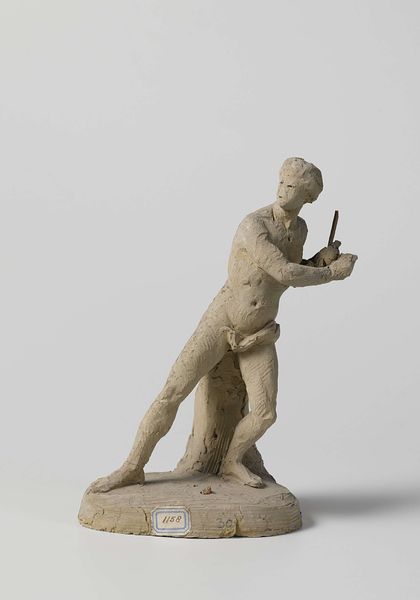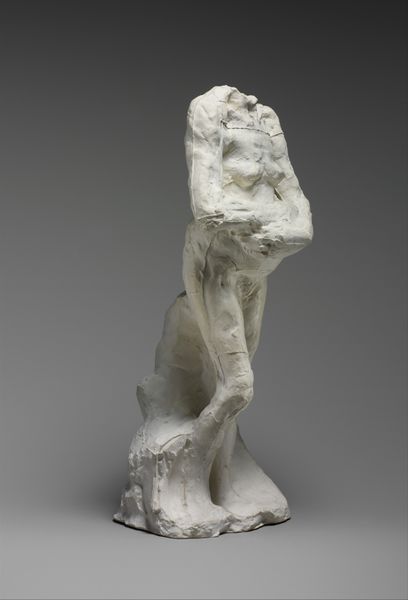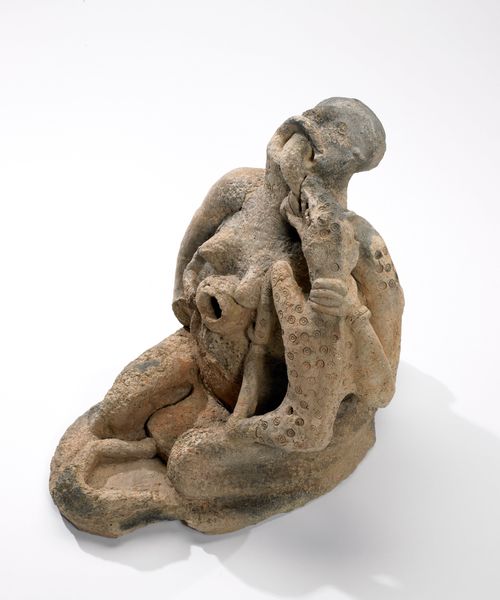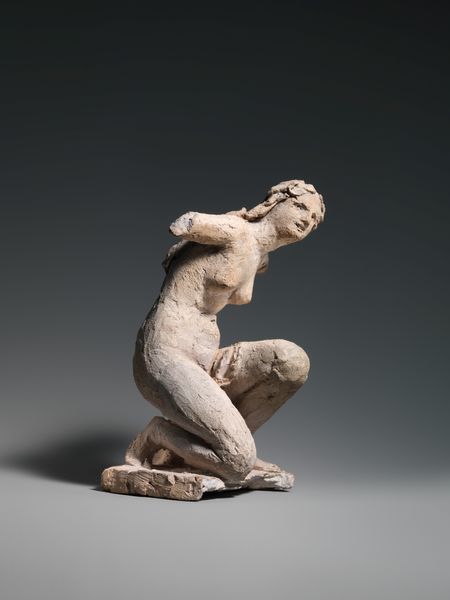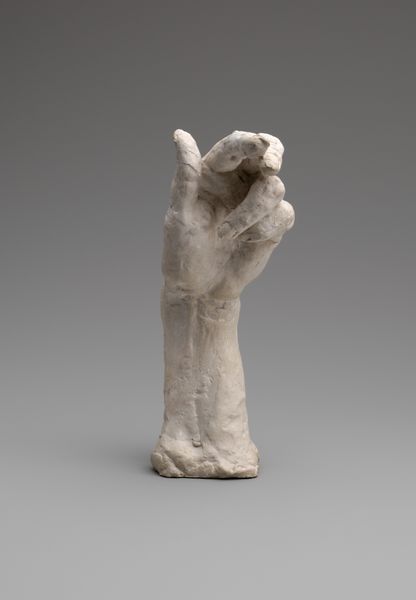
sculpture, terracotta
#
portrait
#
sculpture
#
figuration
#
sculpture
#
terracotta
Dimensions: height 22 cm, width 7.5 cm, depth 10.5 cm
Copyright: Rijks Museum: Open Domain
Curator: This arresting sculpture is entitled "Les premiers pas", which translates to "The First Steps." Attributed to Eugène Lacomblé, the terracotta piece likely originates from somewhere between 1800 and 1950. Editor: Immediately, the raw, unpolished quality of the terracotta speaks to me. You can almost feel the artist’s hands shaping the material, coaxing form out of the earth. It evokes something deeply human. Curator: Indeed. Observe how Lacomblé uses simple, almost crude, modeling techniques to capture the intimate moment of a mother guiding her child's first steps. There's a strong vertical thrust balanced by the mother's bowed posture. The lines, though simplified, are nonetheless powerful. Editor: The apparent lack of refinement interests me, however. Considering its dating, what was the socioeconomic context for working in such a raw way, directly with terracotta? Was it a deliberate aesthetic choice against the prevailing polished styles, perhaps reflecting a new engagement with working class experience? Curator: An insightful consideration! One can appreciate the overall composition as an exercise in contrasting forms: the smooth surfaces of the child versus the textured robes of the mother, further emphasized through differential handling of light across the work. Notice, for example, the dramatic chiaroscuro where the mother’s arm reaches toward the child. Editor: Exactly. It's about the labour, isn't it? This feels like a meditation on physical support, both in the immediate parental sense, and perhaps a wider consideration of material support and its presence and absence. What did accessing the material, then moulding it like this, communicate? Curator: You highlight interesting considerations. While material circumstances likely contributed to this treatment, the visual outcome speaks of tenderness and profound emotional awareness. Ultimately, it achieves a poignant image of nascent capability—and the nurturing that makes it possible. Editor: Agreed. I appreciate how examining the raw, elemental qualities leads us toward a richer appreciation of the tender scene it depicts.
Comments
No comments
Be the first to comment and join the conversation on the ultimate creative platform.
